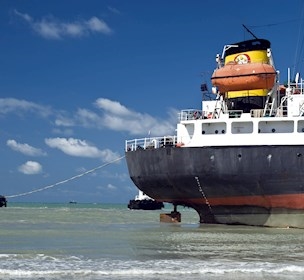Can ISO 19030 comply with reality?
In 2016, a new standard was issued by ISO called “Ships and Marine Technology – Measurement of changes in hull and propeller performance”.
This standard outlines methods for assessing hull and propeller efficiency. Our daily work is closely tied to ship performance measurement, so we've closely followed this standardisation process from the early drafts. Here, we share our insights on the standard..
What does the standard aim to achieve?
From a commercial perspective, minimising a ship's operational costs is crucial. Fuel consumption, influenced by factors such as vessel size, operational profile, crew navigational skills, and environmental conditions, is one of the major costs. A basic performance metric is fuel consumption per cargo moved per nautical mile. While this aligns with EU CO2 emissions regulations and the EEOI defined by the IMO, it doesn't adequately reflect hull and propeller efficiency, as the standard's title suggests. More advanced metrics are needed, though complexity around these can lead to debate among experts.Comparing the standard to real world conditions
The standard’s early drafts prescribed a stringent approach, while the final version includes alternative methods with lower recommended accuracies. This article focuses only on the strict approach.The strict approach requires extensive equipment on board the ships, detailed ship design data, precise maintenance procedures, and continuous monitoring over extended periods. While the standard claims these measures yield high accuracy, we believe its accuracy estimates are somewhat idealised.
Reality and validity
For many clients, a cost-benefit analysis would reject the standard’s approach. It requires onboard equipment that's seldom available and costly to retrofit, ship design data that’s rarely accessible, and strict maintenance protocols that are resource-intensive to implement to a whole fleet of ships.At first glance, the standard may seem to impose heavy demands on the data analysis, but in reality, the heaviest burdens, financial and operational, mostly fall on the ship owners and ship operators.
This could be the standard’s greatest limitation: its authors, in aiming for simplicity, may have inadvertently overlooked critical complexities essential to validity.


